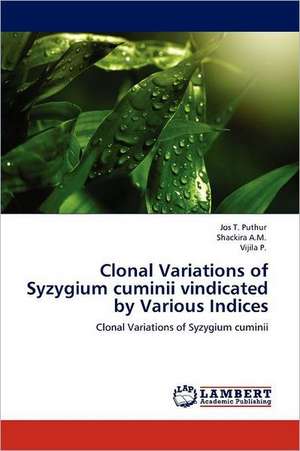Clonal Variations of Syzygium cuminii vindicated by Various Indices
Autor Jos T. Puthur, Shackira A.M., Vijila P.en Limba Engleză Paperback – 7 mar 2012
Preț: 321.89 lei
Nou
Puncte Express: 483
Preț estimativ în valută:
61.60€ • 63.82$ • 51.41£
61.60€ • 63.82$ • 51.41£
Carte tipărită la comandă
Livrare economică 21 martie-04 aprilie
Preluare comenzi: 021 569.72.76
Specificații
ISBN-13: 9783848423910
ISBN-10: 384842391X
Pagini: 60
Dimensiuni: 152 x 229 x 4 mm
Greutate: 0.1 kg
Editura: LAP LAMBERT ACADEMIC PUBLISHING AG & CO KG
Colecția LAP Lambert Academic Publishing
ISBN-10: 384842391X
Pagini: 60
Dimensiuni: 152 x 229 x 4 mm
Greutate: 0.1 kg
Editura: LAP LAMBERT ACADEMIC PUBLISHING AG & CO KG
Colecția LAP Lambert Academic Publishing
Notă biografică
Dr. Jos T. Puthur,Asst. Professor,Division of Plant Physiology and Biochemistry, Department of Botany, University of Calicut, Kerala, India - 673635, Tel: +91-9447507845,E Mail: jtputhur@yahoo.com. Current Research Interests : Osmoregulation, Biochemical and Molecular Response to Abiotic Environmental Stresses


